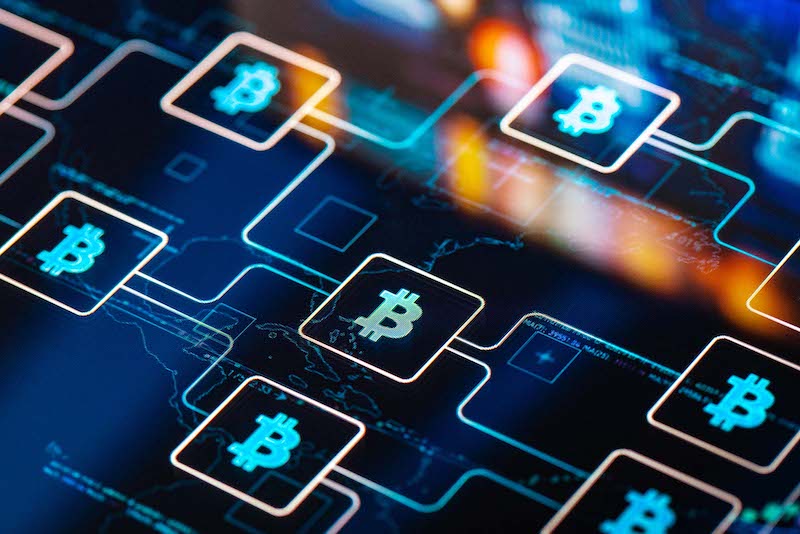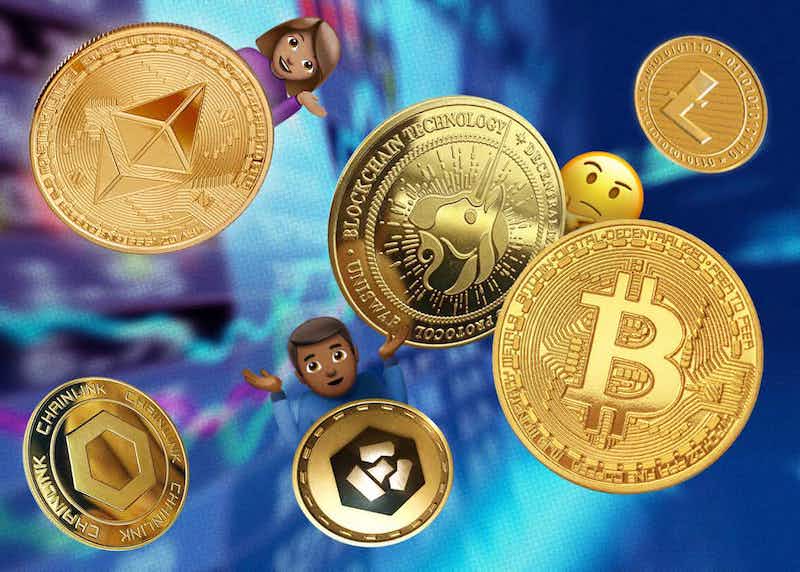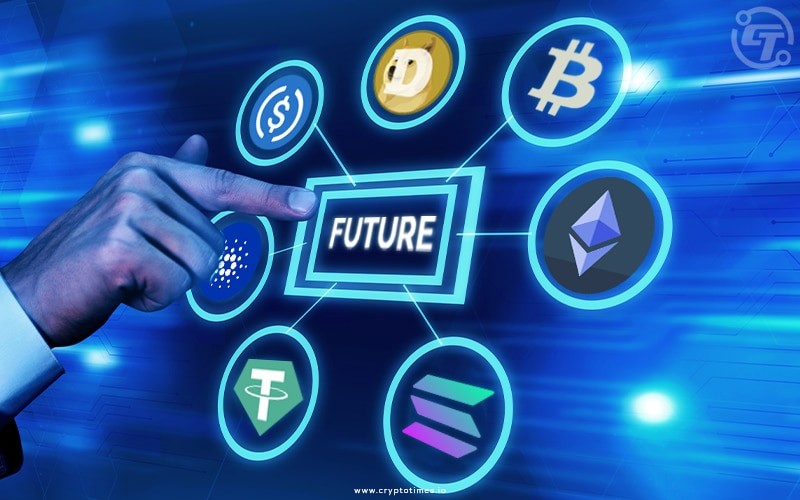What is cryptocurrency? It’s our modern digital gold, transforming how we see and use money. Unpack this new currency’s allure as I guide you through its digital web. Let’s slice through the tech talk and get straight to what you need to know. Starting from the basics, we’ll dive into blockchain, the beating heart of crypto. Next, see crypto in action and grasp the simple gears that drive mammoth transactions. Then, meet the big names like Bitcoin and their digital cousins changing the game. And finally, we explore the future — where will crypto take us tomorrow? Buckle up; it’s a thrilling ride to digital treasure!
Unpacking the Cryptocurrency Phenomenon
Demystifying Cryptocurrency: A Beginner’s Guide
Imagine a kind of money that is not a paper bill or metal coin. It’s a digital form of money called cryptocurrency. Cryptocurrency is like online cash. Unlike dollars or euros, no single group controls it. People can send cryptocurrencies to each other without a bank in the middle. This is possible through a special system called blockchain.
Introduction to Blockchain: The Foundation of Crypto
Think of blockchain like a digital record book. Every time someone sends or gets cryptocurrency, the details go into this book. It’s not a book you can touch. It’s made up of blocks of data linked together online. These blocks form a chain. That’s why it’s called blockchain.
So, what do you need to know about cryptocurrencies and blockchains? Let’s break it down into simple parts.
Cryptocurrencies use math to create and manage them. This math is a kind of code called cryptography. That’s why they’re super secure. You might hear terms like Bitcoin, Ethereum, and altcoins. These are types of cryptocurrencies. They’re like different brands of digital money. Bitcoin was the first one and is still the biggest. Ethereum is second in line, and altcoins are like the other guys. Each one works on its own blockchain or a shared one.
To own or use cryptocurrency, you need a digital wallet. But it’s not like a wallet you carry in your pocket. It’s a digital tool that holds your cryptocurrencies. Remember, there’s no bank here. So, your digital wallet is really important. It keeps your digital money safe.
What’s cool about cryptocurrency is how it moves from one person to another. It uses a peer-to-peer system. This means anyone, anywhere, can send and receive it directly. As for where to buy and sell these digital coins, there are places called cryptocurrency exchanges. Think of them like digital currency markets.
But how are new cryptocurrencies made? It’s a process called mining. It’s not like digging in the ground though. It involves computers solving complex puzzles. When they solve one, new coins come into existence.
Let’s not forget, there are rules. Countries are still figuring out how to handle cryptocurrencies. They’re thinking about things like taxes and laws. This is because it’s still new, and they want to keep folks safe.
Cryptocurrencies are more than just money. They can also be used in smart contracts. These are like normal contracts but run automatically online. If you’re thinking about investing, just like any other investment, it comes with risks. But also, with possible rewards.
They’re also changing how many things work. They offer a peek into what money could look like in the future. A world where transactions are fast, global, and secure. It’s a space always growing and shifting, with plenty to learn and explore.
Cryptocurrencies sound complex at first, but once you grasp the basics, you see the potential. They’re shaping a world where money goes beyond paper and coins. It’s an adventure into the future of finance, and everyone’s invited.
Cryptocurrency in Action: How It Works
The Mechanism Behind Crypto Transactions
Ever wonder how a crypto coin changes hands? It’s simple yet smart. Imagine sending an email. You type a message and hit send, right? That’s nearly how crypto moves, just with more steps for safety. First, you decide to send some digital cash. You start a transaction from your digital wallet. This transaction uses unique codes known as keys. Your private key proves it’s really you. The public key is like an address that everyone can see.
Every transaction joins a pool with others. Here, miners pick it up for a process called validation. This means checking it’s all true and follows the rules. Once they confirm this, your transaction gets a green light. Next, it lands on the blockchain. This is a long list, or ledger, that’s open for all to see. It records every crypto trade ever made. Inside this record, your transaction sits safe and sound.
Say you buy a book with Bitcoin. The seller gets a notification of incoming funds very soon. It’s fast because the transfer doesn’t need a bank in the mix. It’s just you and the seller, doing your thing as peers in a digital world. This way of trading is why many folks like crypto. It’s direct, without any roadblocks. This ease has a mighty pull, luring more people every day.
Understanding Cryptocurrency Mining and How New Coins are Created
Mining doesn’t mean digging in dirt; it’s more brain than brawn. Miners use computers to solve tough math puzzles. Solving them adds new blocks to the blockchain. Here’s the fun part – the first to finish gets a prize in crypto coins! This is how fresh coins come into play.
It’s not just about the prize, though. Mining acts as a guard for the whole system. The puzzles make sure only the true transactions make it to the blockchain. This stops people from faking or changing past transactions. That’s important due to the open nature of the list.
Mining’s not easy. It takes lots of energy and time. That’s on purpose—to make the blockchain secure. This security gives folks trust in the system. It’s why people believe crypto has value. The computer power miners use also helps the network run smooth. The network covers the whole world and needs all this power to work right.
Miners are key players, keeping the blockchain true and strong. They stand guard as new coins pop into existence. They ensure trading stays open and clear for all. Every new block means a win for the whole crowd.
This might sound complex, but it’s just the tip of the iceberg. The world of crypto is deep, with much more to explore. This quick peek should give you a good starting point. Dive in and you’ll grasp how amazing the system is. The doors are open, so why not step into the future of money?
The Varied Faces of Cryptocurrency
Bitcoin and Altcoins: Diverse Players in the Crypto Space
Imagine a world where money moves like a text message, quick and easy. That world’s here, it’s the world of cryptocurrency. People often start with Bitcoin, the first and most well-known digital treasure. But there’s more to the story. Altcoins, or “alternative coins,” are the other stars in the crypto sky. Let’s dive in!
Bitcoin kicked off a money revolution, changing how we think of and use money. Bitcoin’s a digital cash form you can send to anyone, bypassing banks. It sparked the creation of thousands of altcoins. Each altcoin has its unique perks and uses. From Ether, powering smart deals on Ethereum, to coins that support artists, the variety is huge. Each coin in this growing digital economy makes its own wave.
Navigating the World of Crypto Wallets and Security
Now, let’s talk about keeping your digital coins safe. Just like you need a wallet for your cash, you need a crypto wallet for your digital currency. These wallets don’t hold coins physically. They keep special keys, kind of like ultra-secure passwords. These keys let you access and spend your crypto. Without them, your digital money’s as good as gone.
Two main wallet types exist: “hot” and “cold.” Hot wallets are online; great for daily use but riskier. Cold wallets are offline; think of them as high-security vaults.
Remember, in the crypto world, you’re your own bank. That means security’s in your hands. Keep your keys safe, and you keep your crypto safe. It’s new, sure, but it’s not so scary once you learn how it ticks. Each step to understanding brings you closer to being part of this exciting digital economy!
The Future and Impact of Cryptocurrency
Exploring the World of Decentralized Finance (DeFi)
Imagine money where no banks are in charge. That’s what DeFi’s all about. DeFi is short for decentralized finance. It’s like a big online bank, but run by many users across the world. It works on blockchain, a list of all deals made, that anyone can see but can’t change.
People use DeFi for loans, earning interest, and trading coins. It’s quick, open to all, and doesn’t need paperwork. But, be careful, DeFi can be risky. You can lose money if you’re not careful. Always learn and start small.
DeFi is built on crypto coins like Bitcoin. Bitcoin was the first, and it started it all. Now, many coins exist, each different in its way. To use DeFi, you buy coins or get them through mining. Mining is when computers solve hard math to make new coins. It needs lots of energy, but also secures the system.
To keep coins safe, people use crypto wallets. These can be apps or even special USB sticks. They can be safer than keeping money in a normal bank. But, losing the special codes to your wallet means no one can get those coins back.
Blockchain and DeFi give power back to the people. They cut out the middleman. So, no one person or group has control. This worries some governments though. They’re trying to figure out rules to make sure everything stays fair and safe.
With DeFi, anyone with the internet can be part of the global economy. People in places without good banks can send, get, and save money easily. It’s a big leap for making money work for everyone.
Adoption and Regulation: The Path Forward for Crypto
More and more people are using crypto every day. Knowing the basics of crypto is key to understanding virtual money. Just like coins and paper money, it’s used to buy things. But crypto only exists on computers.
Businesses are starting to accept crypto, from small shops to big companies. Some even pay their employees with it. But, crypto prices change a lot. It’s like a roller coaster. This makes some people uneasy about using it for everyday things.
Governments worldwide are working on rules for cryptocurrency. They want to make sure people don’t use it for bad stuff or to avoid taxes. As rules get clearer, more people might start to trust and use crypto.
Investing in cryptocurrencies is popular. Some people have made a lot of money, but others have lost. Knowing the risks before jumping in is wise. Don’t put in more than you can afford to lose.
Understanding crypto regulations is tough, but it’s part of being a smart user or investor. Keeping up with the rules keeps your money safe and avoids trouble. As crypto grows, we will all learn more. And we might just see how big a game-changer it really is.
In this post, we’ve dived into the world of cryptocurrency. We started by breaking down what crypto means and how blockchain makes it all tick. Then, we looked at how people use crypto for buying and making money. We also talked about the different kinds of cryptocurrencies like Bitcoin and altcoins, and how to keep them safe in wallets.
I’ve shared how powerful crypto can be, changing how we think about money. We also touched on DeFi – it’s a new way to handle money without banks. Lastly, we thought about how rules and people accepting crypto will shape its future.
Here’s my final thought: crypto isn’t just a trend—it’s a fresh start for our money. It’s full of chances but has risks too. Let’s keep an eye on how it grows and changes our world. Stay smart, stay safe, and keep learning. Crypto is still young, and the best is yet to come.
Q&A :
What is the basic concept of cryptocurrency?
Cryptocurrency is a type of digital or virtual currency that uses cryptography for security, making it difficult to counterfeit. It operates on a decentralized network of computers using technology called blockchain, which is a distributed ledger enforced by a disparate network of computers. Unlike traditional currencies, it is not controlled by any central authority like a government or bank, giving users a level of autonomy and privacy for their financial transactions.
How do cryptocurrencies work?
Cryptocurrencies work through a technology called blockchain which is a public, digital ledger. Each ‘block’ in a blockchain contains a number of transactions; every time a new transaction occurs on the blockchain, a record of that transaction is added to every participant’s ledger. The decentralized nature of cryptocurrency networks makes them secure against traditional financial threats and allows for direct peer-to-peer transactions.
Can cryptocurrencies be converted into cash?
Yes, cryptocurrencies can be converted into cash. This can be done through cryptocurrency exchanges, peer-to-peer transactions, or Bitcoin ATMs where applicable. Upon selling your cryptocurrency on an exchange, you can choose to withdraw the amount in your local currency to your bank account, or you can use P2P services to find a buyer who pays you directly in cash.
What are the risks associated with investing in cryptocurrencies?
Investing in cryptocurrencies carries several risks, including market risk due to high volatility in prices. There’s also the risk of theft from hacking, fraud, and a lack of regulation that can lead to opaque or deceptive practices. Additionally, since cryptocurrencies are relatively new, their long-term viability is still uncertain, and technological, regulatory, or other developments could significantly impact their value.
How do I start investing in cryptocurrency?
To start investing in cryptocurrency, you first need to do thorough research to understand the risks and the market. Once you’re ready, you can choose a cryptocurrency exchange or trading platform, create an account, and fund it with currency that you can then use to buy cryptocurrencies. It’s crucial to ensure adequate security measures like two-factor authentication and to keep the bulk of your investments in a secure wallet.







